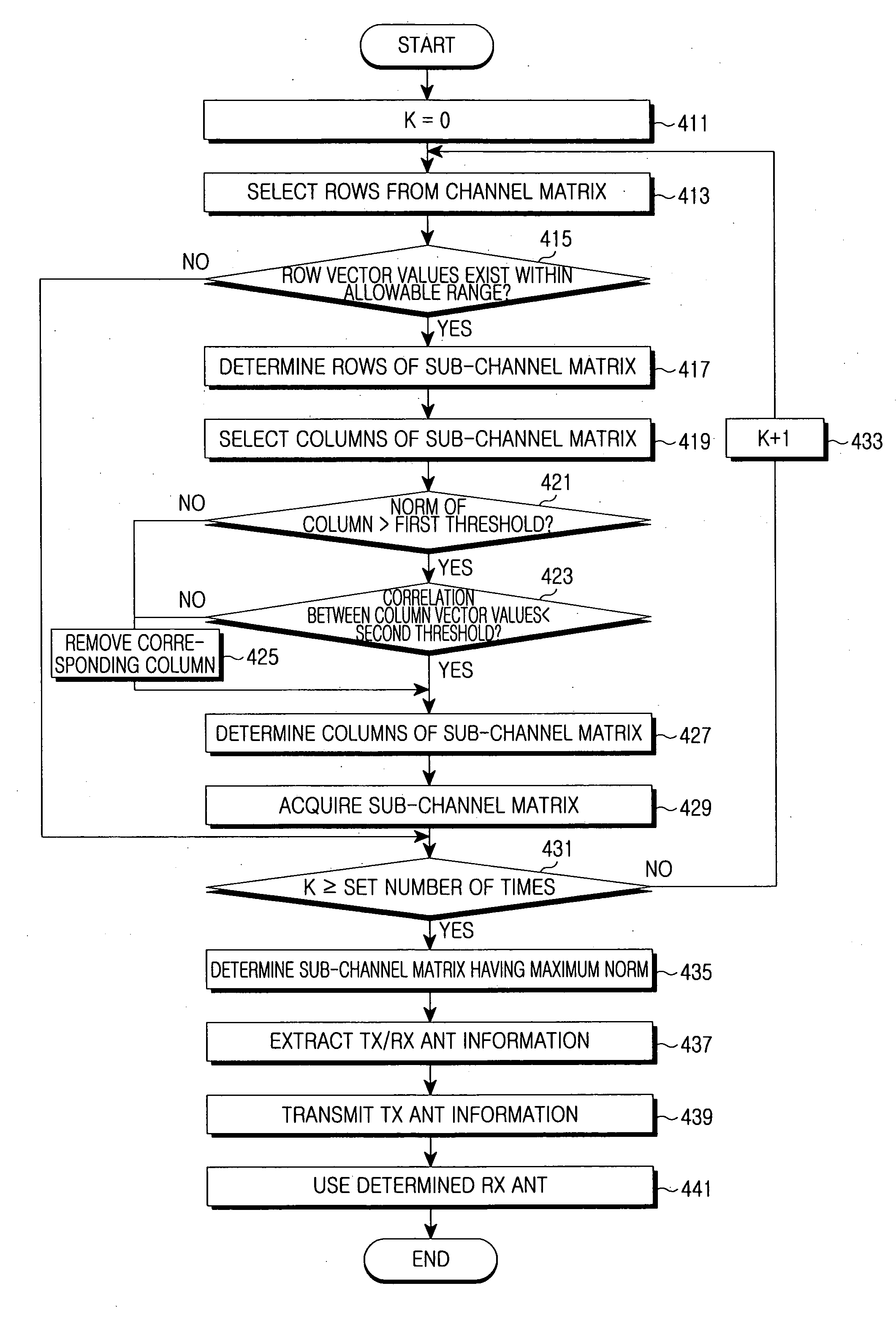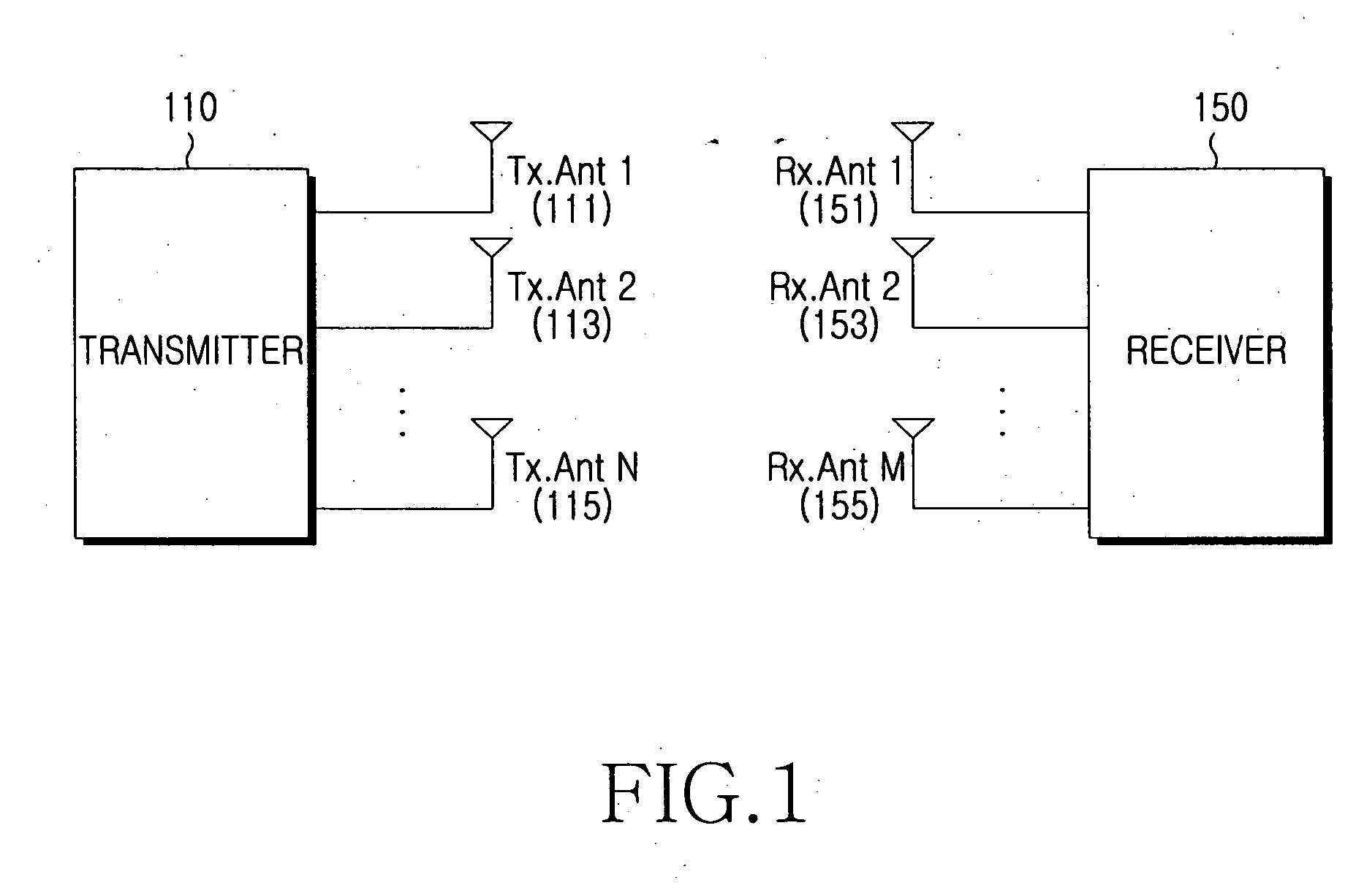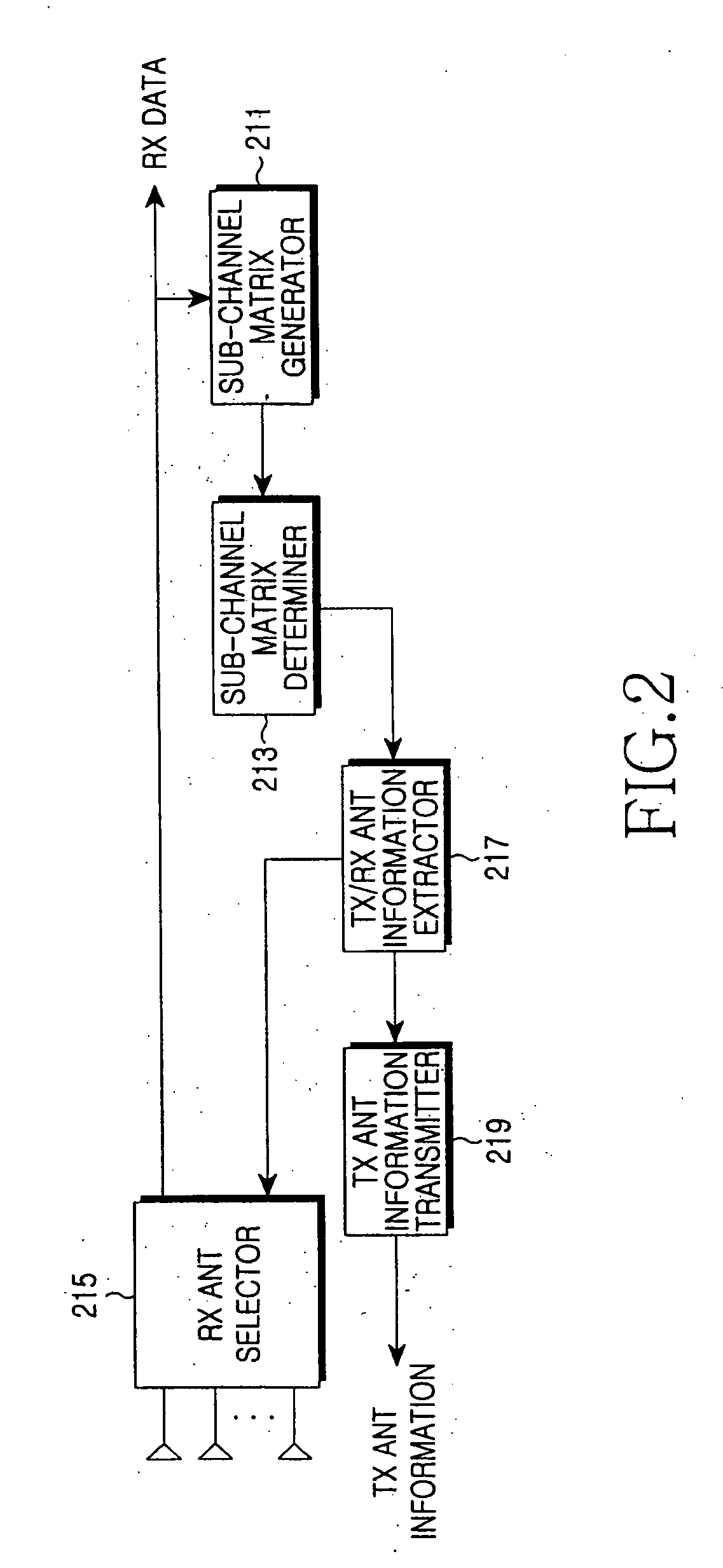Apparatus and method for determining transmit/receive antenna in communication system using multiple antennas
a communication system and antenna technology, applied in the field of antennas and antenna methods, can solve the problems of loss of information, efficiency and reliability of data transmission over a channel, wireless channel environment existing in a mobile communication system, etc., and achieve the effect of reducing system complexity, optimizing antenna selection, and reducing the amount of information for antenna selection fed back between a transmitter and a receiver
- Summary
- Abstract
- Description
- Claims
- Application Information
AI Technical Summary
Benefits of technology
Problems solved by technology
Method used
Image
Examples
first embodiment
[0085]FIG. 4 is a flowchart illustrating an operational procedure of determining a Rx ANT in a receiver by using Rx ANT information according to the present invention.
[0086] Referring to FIG. 4, a receiver sets a value of K, for preventing performance deterioration, to 0 in step 411, and proceeds to step 413. Since the receiver uses probability to acquire a sub-channel matrix, performance deterioration may occur. Thus, a sub-channel matrix is iteratively generated the number of times corresponding to a value of K.
[0087] The receiver selects rows of a sub-channel matrix from a channel matrix, using Equation (5), in step 413, and proceeds to step 415. The receiver determines in step 415 whether a vector value of each selected row is within an allowable range. The allowable range is set such that rows having vector values near to zero (0) are excluded from the selected rows. If the norm of any row vector has a value near 0, then an antenna channel state in the corresponding row vector...
second embodiment
[0102]FIG. 5 is a flowchart illustrating an operational procedure of determining a Rx ANT in a receiver by using Rx ANT information according to the present invention.
[0103] Referring to FIG. 5, a receiver sets a value of K, for preventing performance deterioration, to 0 in step 511, and proceeds to step 513. Since the receiver uses probability to acquire a sub-channel matrix, performance deterioration may occur. Thus, a sub-channel matrix is iteratively generated the number of times corresponding to a value of K.
[0104] The receiver selects rows of a sub-channel matrix from a channel matrix using Equation (5), in step 513, and proceeds to step 515. The receiver determines in step 515 whether a vector value of each selected row is within an allowable range. The allowable range is set such that rows having vector values near to zero (0) are excluded from the selected rows. If the norm of any row vector has a value near to 0, then an antenna channel state in the corresponding row vect...
PUM
 Login to View More
Login to View More Abstract
Description
Claims
Application Information
 Login to View More
Login to View More - R&D
- Intellectual Property
- Life Sciences
- Materials
- Tech Scout
- Unparalleled Data Quality
- Higher Quality Content
- 60% Fewer Hallucinations
Browse by: Latest US Patents, China's latest patents, Technical Efficacy Thesaurus, Application Domain, Technology Topic, Popular Technical Reports.
© 2025 PatSnap. All rights reserved.Legal|Privacy policy|Modern Slavery Act Transparency Statement|Sitemap|About US| Contact US: help@patsnap.com



